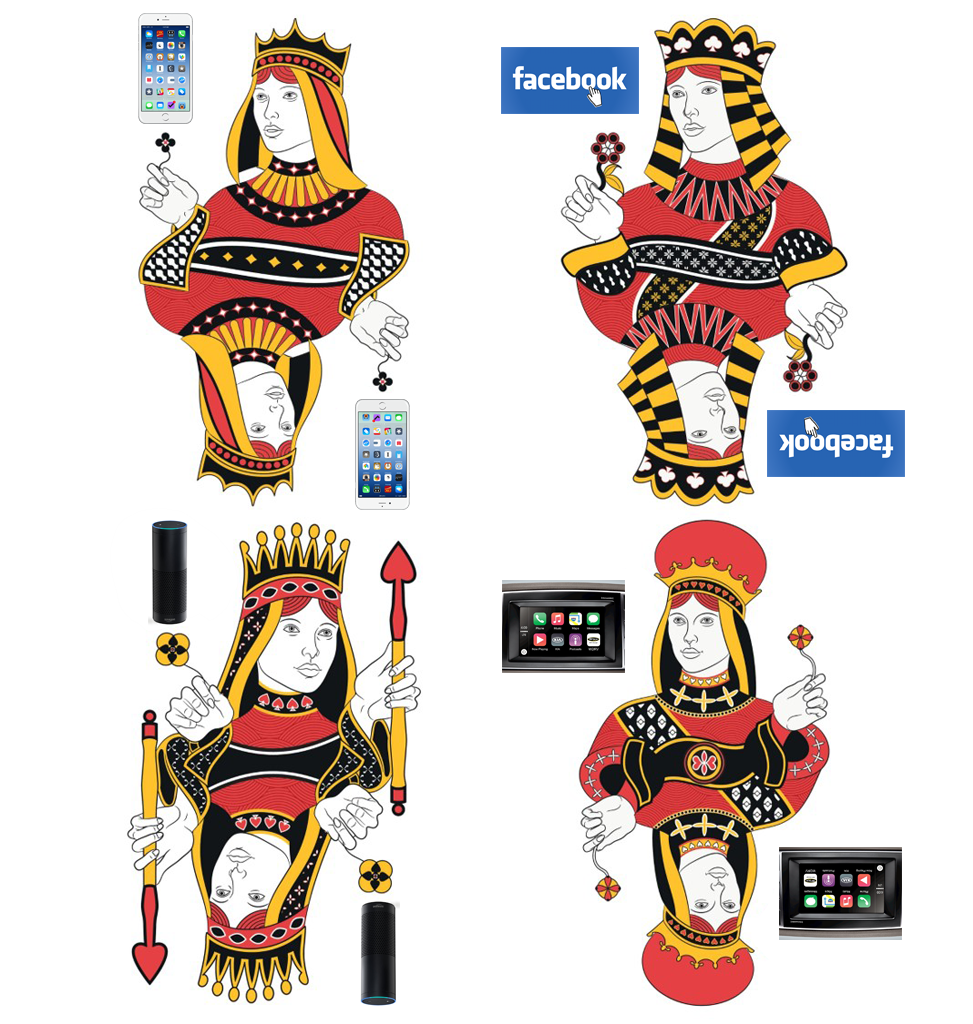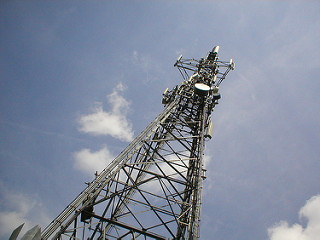
I know…today’s blog post title sounds like the name of a rock band.
But, in fact, it’s the story of how content and distribution continue their fascinating and evolving dance around the radio industry. You’ve probably heard me say this before:
Content is king, but distribution is queen.
And by that I mean that while radio stations are nothing without their great personalities, community involvement, news teams, music mix, and talk shows, if consumers can’t find your content or prefer platforms other than AM/FM, it just doesn’t matter. And these days, while traditional broadcast radio listening remains healthy in the teeth of digital competition, there is more and more TSL being spent on mobile devices, smart speakers, and of course, touchscreen dashboards that feature Apple CarPlay and Android Auto.
I thought about this the other day after speaking with a broadcaster who was grousing that Amazon won’t allow stations to run commercials within their “skills” on their red hot Echo devices. Now, the “rules and regulations” of these smart speakers are being rewritten as you read this, but Amazon has been especially lukewarm to Alexa being cluttered with ads.
He was unhappy about these limitations on monetization, and we had to remind him that radio doesn’t control Alexa as a prime distribution outlet. And if you think about it, that’s also the case for the other “Queens of distribution” – smartphones and tablets, connected cars, and social media. Executives like Tim Cook, Jeff Bezos, and Mark Zuckerberg get to write the rulebook. It’s their distribution platforms. They get to decide how we use them, how content is approved – or rejected – and whether we’re able to run Geico commercials on their platforms.
And perhaps it’s unpopular to say, but radio is fortunate that so many of these “Queen outlets” are audio and radio-friendly – not to mention, very cost-effective. Radio station content is in the coolest gadgets out there – the center stack of the hottest cars rolling off the assembly line, premium smartphones like iPhone X, and on the social networks where the world shows up every day to share their stories, their opinions, and their pets.
Back in the day, it cost broadcasters millions to buy a station license, build a tower, purchase a transmitter and a building, hire a staff, and spend hundreds of thousands of dollars building and promoting a radio brand.
In contrast, the price of entry for distribution on the Echo, the Jaguar or the Cadillac, and Facebook and Twitter is mere pennies on those dollars. Radio gets to use these massively popular distribution outlets – assuming it abides by rules that are set. And in the case of social, the cost of entry is simply the time it takes to establish a page and post content. As a marketing and branding tool, even the most fastidious CFO would tell you that’s great ROI.
But for many radio owners accustomed to totally controlling their destinies (the FCC aside), this new media reality may seem as shocking and out of character as an ice bucket challenge. Someone else is pulling the strings, and no one is sending radio a courteous heads-up letter when the rule changes or a decision comes down from someone else’s corner office.
The reality that Tesla has left AM radio off its new Model 3s is a bitter pill for the industry to swallow. So is Apple’s total lack of interest in turning on its FM chips in their popular iPhone line of smartphones.
As we’ve learned in recent years, it is no longer a done deal the big automakers will follow a predictable, familiar path with the design of the hardware and software displayed on their techie dashboards. Now, seemingly any content creator – SiriusXM, Pandora, Stitcher, Spotify, and others – has an equal or even better piece of in-car real estate than local AM and FM stations.
Similarly, the mega-smartphone makers and social media titans owe radio no loyalty or even respect. That’s the price you pay for virtually free distribution.
For decades, radio has played the role of media gatekeeper, making the calls about the music, formats, PSAs, and personalities that make it to the airwaves. Now, the distribution shoe is on the other foot, and it’s not always a great fit for broadcasters used to calling the shots.
 Rather than the industry wringing its collective hands over these letdowns and disappointments, it is paramount that radio execs embrace these new distribution outlets, while devising strategies that optimize their brands on these exciting new pathways.
Rather than the industry wringing its collective hands over these letdowns and disappointments, it is paramount that radio execs embrace these new distribution outlets, while devising strategies that optimize their brands on these exciting new pathways.
Our mobile apps company, jācapps, has coined the mission statement “App Everywhere®” and its more than just an empty slogan. It translates to making sure radio content is available on all the distribution queens – smartphones, tablets, smartwatches, smart TVs, and smart speakers. Pretty smart, eh?
In many ways, the content challenge for radio hasn’t changed all that much. Sure, there’s more competition now. But the elements that go into making great radio are similar to the ones we were all working on decades ago.
It’s the distribution models that have changed. Radio needs to realistically see beyond that behemoth tower in the parking lot or field, and direct its efforts to ensuring its content is being heard, seen, and enjoyed.
As a wise rock band once sang, “You know the Queen of Hearts is always your best bet.” So is the Queen of Diamonds, Clubs, Spades, and whatever new distribution royalty rolls out in the years to come.
Let’s keep working on that content, while not forgetting about the growing importance and value of its distribution.
Special thanks to Kelsey Neveu.
- Old Man, Take A Look At My Ratings - December 20, 2024
- In The World Of On-Demand Audio, How Do We Define Success? - December 19, 2024
- Scenes From The Classic Rock Highway – 2024 Edition - December 18, 2024




Amen! Thank you, Fred.
Appreciate you reading our blog, Clark.
Today’s blog post pairs nicely with the one from Integr8. Both have stimulated my mind and I’m sure a new blog article will bloom from both of them in the coming weeks.
Important thoughts that need to be shared and digested by everyone in radio.
Thank You Fred
The Joker in this hand is “who pays the music royalties?” Unlike the sweet deal US broadcasting has enjoyed over the years, monetizing online music content will be more challenging.
I think most small market stations will abandon music programming, and they might cease to provide a 24/7 audio stream. They’ll be live in the more profitable dayparts and special events, especially local sports.
I’ve heard that suggested before, Russ. Financial realities can bite, and royalties are a whole other story for music stations. Thanks for reading the blog and giving us your thoughts.
“‘iPhone 7 and iPhone 8 models do not have FM radio chips in them nor do they have antennas designed to support FM signals, so it is not possible to enable FM reception in these products,” Apple said in a statement.'”
[Source: https://money.cnn.com/2017/09/28/technology/business/fcc-apple-public-safety/index.html%5D
John, I’m well aware of that. But Apple has refused to activate the chip on previous iPhone models. I’m not saying they would definitely not turn them on if they were available on the newer phones, but history suggests they have no interest in doing so. Thanks for the comment.
Love it Fred! My first thought when I saw your “teaser” on twitter was , “Yes I’m the queen of it all,” which is how I feel as a DJ doing too many things at once and trying to do them all effectively, Challenging to say the least when you work alone. Thank you for your constant inspiration!
Roxanne, you gave me a laugh, and then I thought about what you were saying. Too much multi-tasking often means that nothing gets done the way you hope it would be. Thanks for the reminder that the demands have gone up – a lot – on many people in the radio business. Appreciate your kind comment.
Perhaps the title should have been Queens Of The Stone Age Distribution. For radio of course.
I see the future clearly, as if my eyes could focus again. If we want to listen to radio in our future all electric cars, we’ll have to use the kinds of gadgets we used to use in cars when we wanted to play our CDs (and later iPods).
Dongles with ungainly wires sticking out of the cassette slot.. Oops, no more cassette slots. Hmm, can’t even do it with a CD slot. How will we hook up our dongles so we can listen to the all news station to find out how long we have before the missiles land?
Max, you clearly have a dongle fixation. I’m thinking the implant in your neck will allow you to “think” the content you want to see/hear. At least that’s what they told me at CES.
Late to the party here, but this seems kind of petty on the part of Tesla. Adding an AM chip would probably cost less than $1/car and for many, AM is the only way to listen to a ball game. Given that most Tesla buyers are men, it seems like a bad decision.
Radio should do some research and assuming that a decent % of Tesla buyers would like that AM radio included (my guess is that they would), someone should present those findings to them. One Tesla model won’t hurt radio, but this is a bug that radio doesn’t want other car companies to catch.
As for the FM Chip, I always thought its potential was overstated, but regardless, it appears that the headphone jack is on the way out for phones, which means the FM Chip is too.
The claim is that electric cars generate interference, but that doesn’t seem to impact vehicles like the Volt or the Nissan Leaf. It’s hard to know the thinking here, and it’s something that is worth addressing. I like the research idea – maybe there’s something here. Thanks, Bob.
Where’s a “LIKE” button when you need it?
Not sure, Tim, but I appreciate the thought. Thanks for reading our blog.
Not sure where my list went; oh well… knowing a majority under 25 do stream local radio. And now ALL demographics will watch ‘couch tour’ … which is becoming interactive, Just cannot ignore the changes. If majority thinknto stream; as Fred is alluding to rightfully; Radio must hop on the train. Simply just think of a snap chat UX while ‘watching’ radio; like it’s your own MTV Video. Now try to recall yourself at 12-18 and technology. Then ask yourself how you interact with technology in 2017… There are many ways to slice bread.
Slice away, Josh. Thanks for the comment.